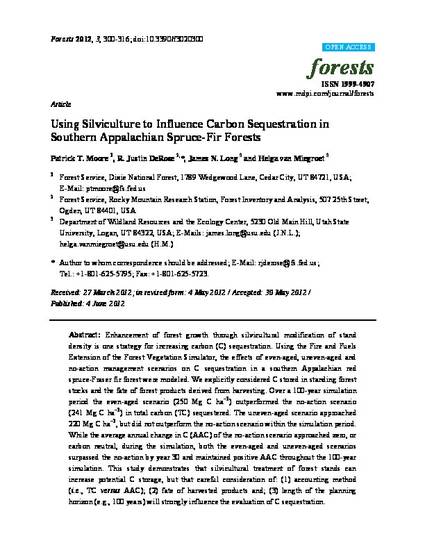
Article
Using Silviculture to Influence Carbon Sequestration in Southern Appalachian Spruce-Fir Forests
Forests
(2012)
Abstract
Enhancement of forest growth through silvicultural modification of stand density is one strategy for increasing carbon (C) sequestration. Using the Fire and Fuels Extension of the Forest Vegetation Simulator, the effects of even-aged, uneven-aged and no-action management scenarios on C sequestration in a southern Appalachian red spruce-Fraser fir forest were modeled. We explicitly considered C stored in standing forest stocks and the fate of forest products derived from harvesting. Over a 100-year simulation period the even-aged scenario (250 Mg C ha−1) outperformed the no-action scenario (241 Mg C ha−1) in total carbon (TC) sequestered. The uneven-aged scenario approached 220 Mg C ha−1, but did not outperform the no-action scenario within the simulation period. While the average annual change in C (AAC) of the no-action scenario approached zero, or carbon neutral, during the simulation, both the even-aged and uneven-aged scenarios surpassed the no-action by year 30 and maintained positive AAC throughout the 100-year simulation. This study demonstrates that silvicultural treatment of forest stands can increase potential C storage, but that careful consideration of: (1) accounting method (i.e., TC versusAAC); (2) fate of harvested products and; (3) length of the planning horizon (e.g., 100 years) will strongly influence the evaluation of C sequestration.
Disciplines
Publication Date
2012
DOI
https://doi.org/10.3390/f3020300
Citation Information
Helga Van Miegroet. "Using Silviculture to Influence Carbon Sequestration in Southern Appalachian Spruce-Fir Forests" Forests Vol. 3 Iss. 2 (2012) p. 300 - 316 Available at: http://works.bepress.com/helga_vanmiegroet/177/
